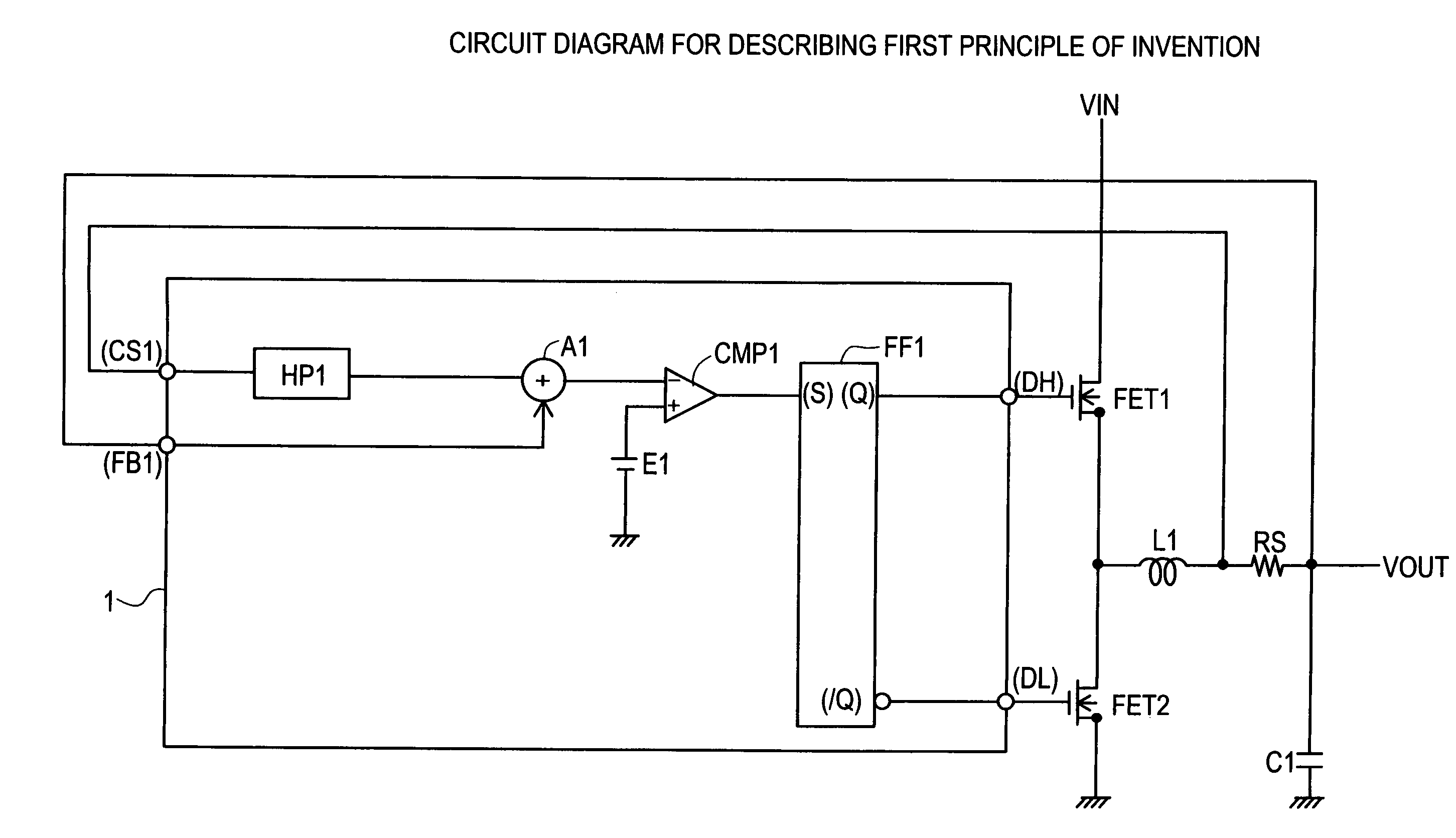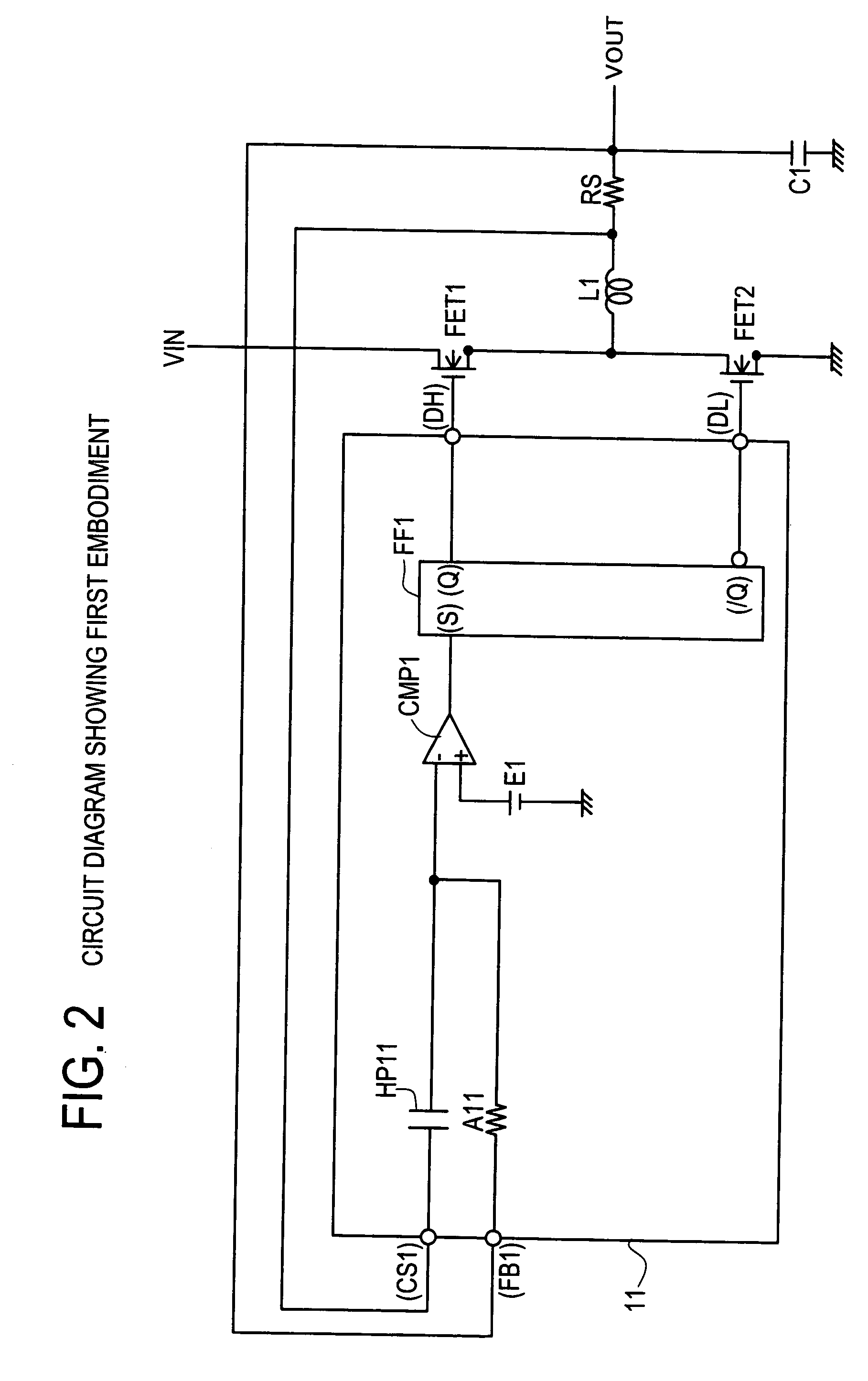DC-DC converter control circuit and DC-DC converter control method
a converter control circuit and converter technology, applied in the direction of dc-dc conversion, power conversion systems, instruments, etc., can solve the problems of unstable switching control, inability to make fast response, and risk of abnormal switching action, so as to achieve rapid response
- Summary
- Abstract
- Description
- Claims
- Application Information
AI Technical Summary
Benefits of technology
Problems solved by technology
Method used
Image
Examples
first embodiment
[0041]FIG. 2 shows a circuit diagram of the invention, embodying the first principle shown in FIG. 1. With a DC-to-DC converter control circuit 11, a high-pass filter capacitor HP11 as a specific example of the high-pass filter HP1 is provided between an input terminal (CS1), and an inverting input terminal of a comparator CMP1. Further, an add-up resistor A11 doubling as a constituent element of a high-pass filter is provided between an input terminal FB1, and the inverting input terminal of the comparator CMP1.
[0042]The add-up resistor A11 represents a specific example of the adder A1. A variation component of a coil current, that is, an AC signal component of a signal inputted from the input terminal CS1, passing through the high-pass filter capacitor HP11, is inputted from the input terminal FB1 to be added to an output voltage VOUT, that is, a DC signal component, passing through the add-up resistor A11. A high-pass filter bandwidth is dependent on HP11, and A11.
[0043]An add-up...
second embodiment
[0052]FIG. 4 shows a circuit diagram of the invention, embodying the second principle (FIG. 3). With a DC-to-DC converter control circuit 21, there are provided a sampling circuit LP21 as an example of the low-pass filter LP2 in the case of the second principle, an inverting amplifier IA21 as an example of the inverting amplifier IA2, and an adder A21 as an example of the adder A2. In addition, there is provided a noninverting amplifier 31 for amplifying a voltage signal VP against a signal inputted to an input terminal (CS1) before outputting the same.
[0053]The noninverting amplifier 31 is a common noninverting amplifier made up of an amplifier AMP1, and resistors R1, R2. Assuming that respective resistance values of the resistors R1, R2 are R1, R2, the noninverting amplifier 31 has a gain G=1+R2 / R1. An output voltage VOUT is inputted to the resistor R1 via an input terminal (FB1). The output voltage VOUT can be deemed as a DC signal component of variation in a coil current, due to...
PUM
 Login to View More
Login to View More Abstract
Description
Claims
Application Information
 Login to View More
Login to View More - R&D
- Intellectual Property
- Life Sciences
- Materials
- Tech Scout
- Unparalleled Data Quality
- Higher Quality Content
- 60% Fewer Hallucinations
Browse by: Latest US Patents, China's latest patents, Technical Efficacy Thesaurus, Application Domain, Technology Topic, Popular Technical Reports.
© 2025 PatSnap. All rights reserved.Legal|Privacy policy|Modern Slavery Act Transparency Statement|Sitemap|About US| Contact US: help@patsnap.com



